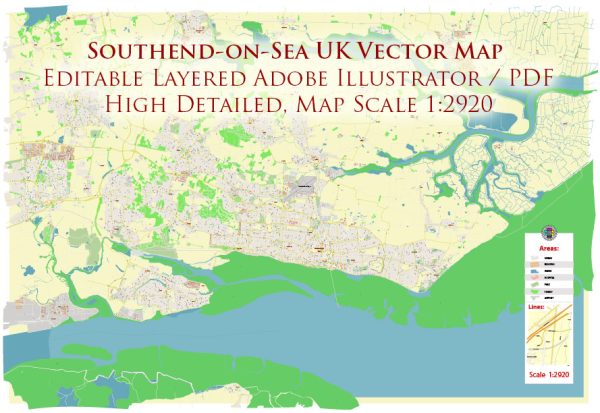Southend-on-Sea, located in Essex, England, has a rich history of urban development that has transformed it from a small fishing village to a bustling seaside resort and commuter town. Here is a brief overview of the key phases in the urban development of Southend-on-Sea:
- Early History: Southend’s history dates back to the medieval period when it was primarily a small fishing and agricultural community. The area remained relatively rural until the 18th century.
- 19th Century Growth: The development of Southend accelerated in the 19th century with the advent of the railway. The opening of the London, Tilbury and Southend Railway in 1856 made Southend more accessible, leading to a significant increase in visitors and residents. The town quickly became a popular seaside destination for day-trippers from London.
- Victorian Seaside Resort: In the late 19th century, Southend developed into a Victorian seaside resort. The construction of the iconic Southend Pier began in 1889, eventually becoming the longest pleasure pier in the world. The seafront was lined with amusement parks, arcades, and other entertainment venues, catering to the growing tourism industry.
- 20th Century Expansion: Southend continued to grow in the 20th century, especially after World War II. The expansion of the town included the development of residential areas to accommodate a growing population. The post-war years saw increased urbanization and the establishment of new neighborhoods.
- Economic Changes and Diversification: As traditional industries declined, Southend shifted towards a more service-oriented economy. The town diversified its offerings to include retail, entertainment, and cultural amenities. The development of the Victoria Shopping Centre and the Cliffs Pavilion, a popular entertainment venue, reflected this shift.
- Transportation Infrastructure: Southend’s accessibility improved with the expansion of transportation infrastructure. The town is well-connected by road and rail, making it a convenient location for commuters working in London.
- Regeneration Projects: In recent decades, Southend has undergone various regeneration projects aimed at enhancing the town’s infrastructure and attractiveness. These projects include the redevelopment of the seafront, improvements to public spaces, and efforts to attract new businesses and investments.
- Cultural and Educational Developments: Southend has also seen the growth of cultural and educational institutions, contributing to its appeal as a residential area. The University of Essex has a campus in Southend, and cultural events, festivals, and art initiatives have added to the town’s vibrancy.
Overall, Southend-on-Sea’s urban development reflects its transition from a small coastal village to a vibrant seaside town with a diverse economy, cultural amenities, and a mix of historical and modern architecture.


 Author: Kirill Shrayber, Ph.D.
Author: Kirill Shrayber, Ph.D.